Refinement on the half-shell. Oysters recall days spent at the seashore, listening to the waves gently lap on shore.
And while the kind of oysters you eat generally are best in the months with an “r” in them, the plates that served them always make me think of the sea and vacations spent at the seashore. In reality, oyster plates are beautiful any time of year!
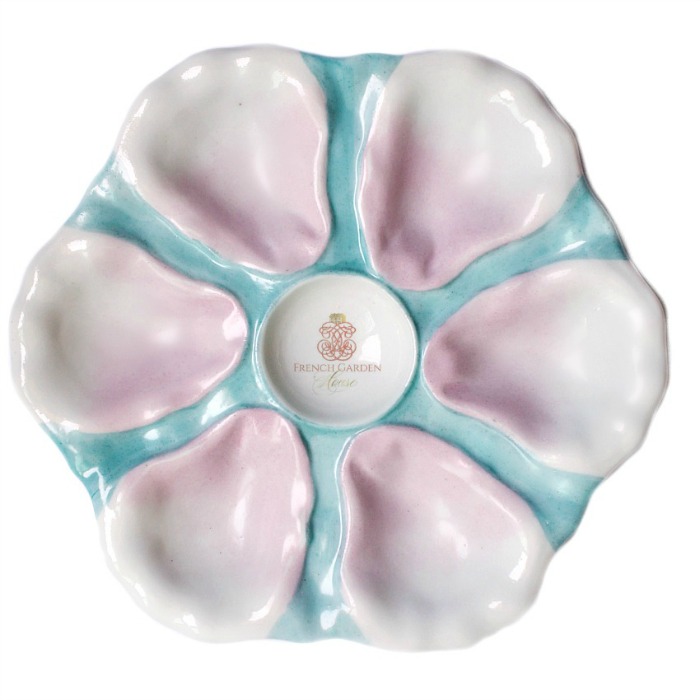
I am not an ostreaphile { a lover or aficionado of oysters as food- yes, I had to look that up!} But I DO adore antique oyster plates.
There is nothing more beautiful to my eye than a gracious dining room, with a collection of antique oyster plates on display. Their very presence just whisper “refinement” – gracious hospitality” – and “elegantly appointed home” to me.
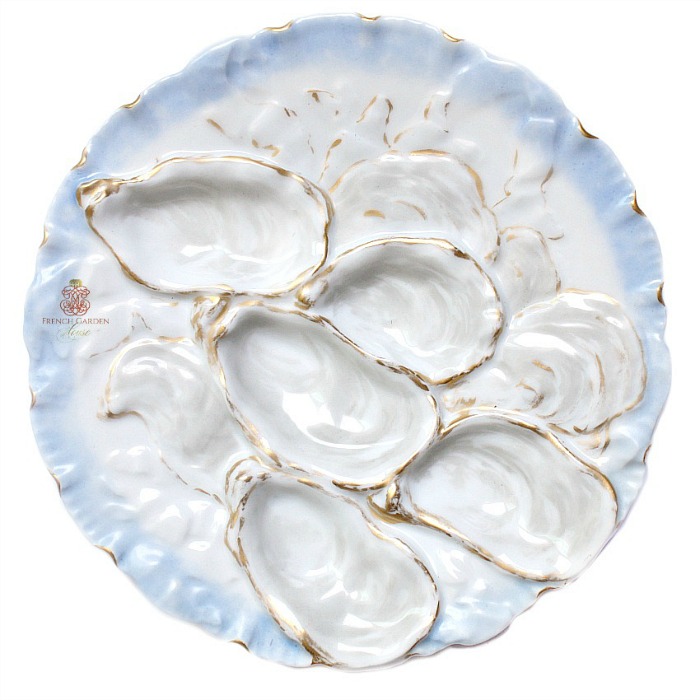
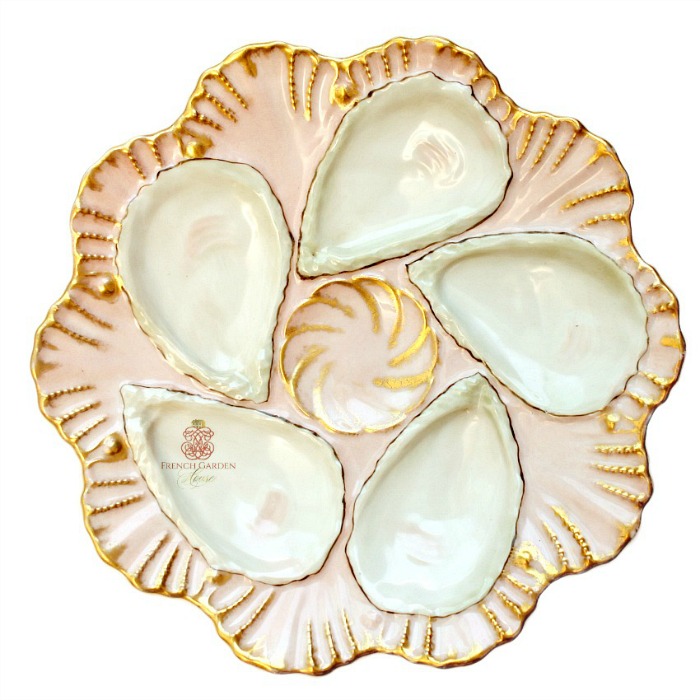
Antique oyster plates are so decorative, alluring and appealing, who wouldn’t love them? Often hand painted, the variety of the plates is astounding, so it’s a collection that can grow and grow. Collectors are drawn to the aesthetics of the serving pieces.
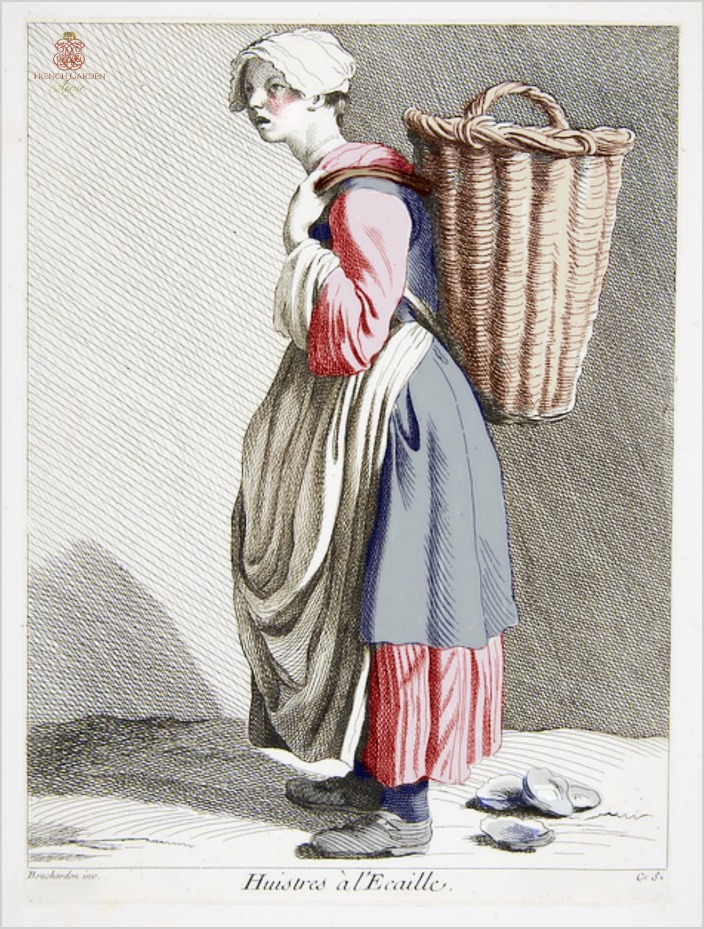
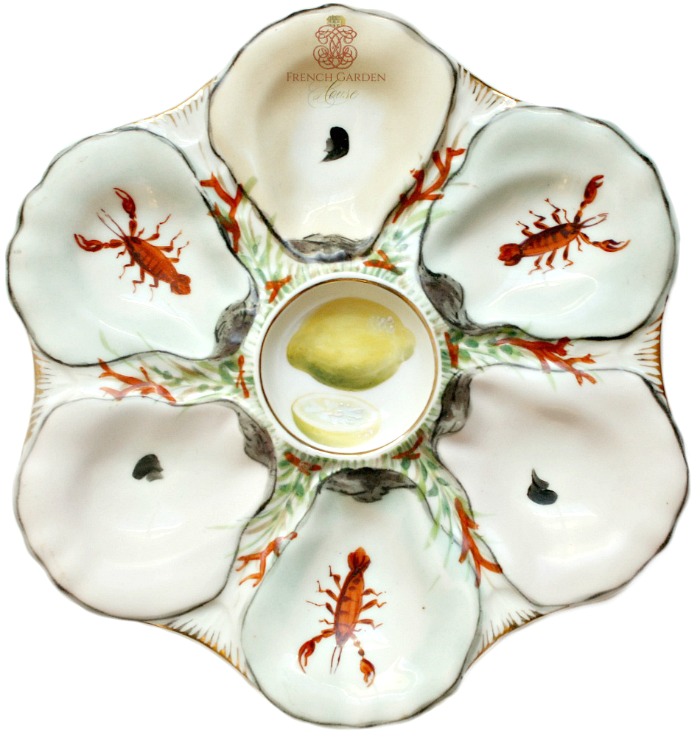
HISTORY:
Antique oyster plates are highly collectable and a gracious way to add the rich history, lore and love of oysters to your home. These days they are mostly displayed as the small works of art that they are, but from 1837 to 1901, eating and serving oysters was a true art form.
In the mid 1800’s, the oyster’s popularity and harvest was at its peak, and society hostesses delighted in serving them on beautiful specially designed plates to their upper echelon guests at grand fetes and diners.
All the grand French and other European luxury porcelain and faience companies created specialized, highly decorative plates, unusually with six wells {indentations} for the oysters to rest in, and a center condiment well in the center for lemon or a sauce.
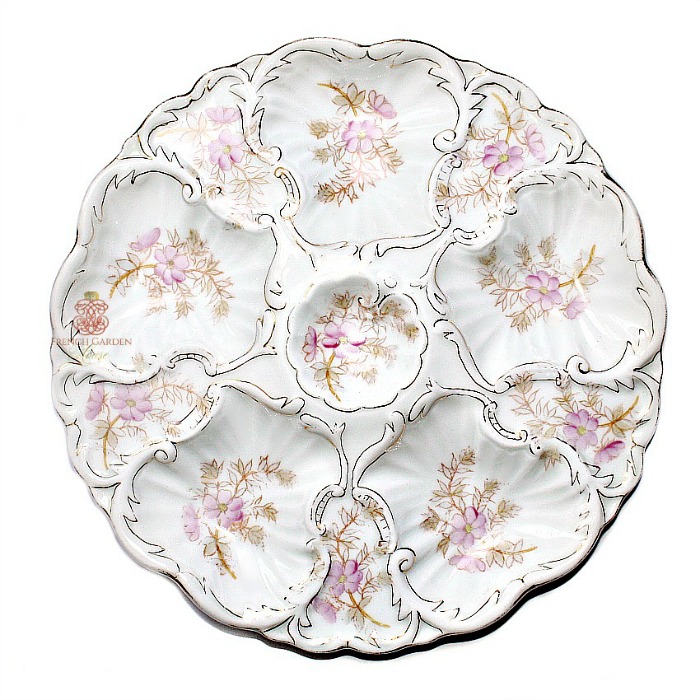
The earliest plates or servers had large indentations, meant to hold a little shaved ice and an oyster in the half-shell. Unfortunately, because the oyster shells are quite abrasive, the shells scratched and damaged the costly and laboriously painted plates, so plates were re-designed to have smaller wells to hold a single raw oyster out of the shell.
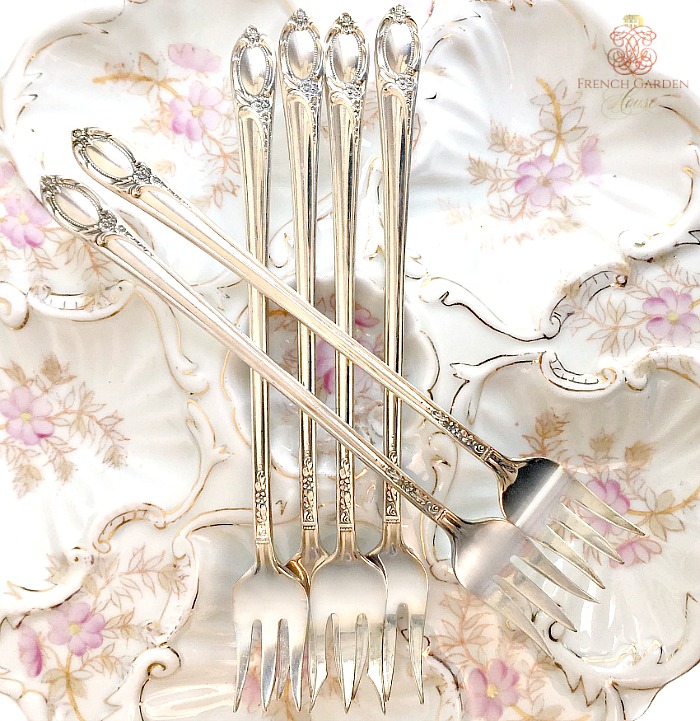
Not to be left behind, silver companies designed a new style fork to use when eating oysters, with just two or three prongs. And of course scoops and other serving pieces in sterling, with vermeil bowls to make sure they were not damaged by coming into contact with lemon juice, an accompaniment to the oysters.
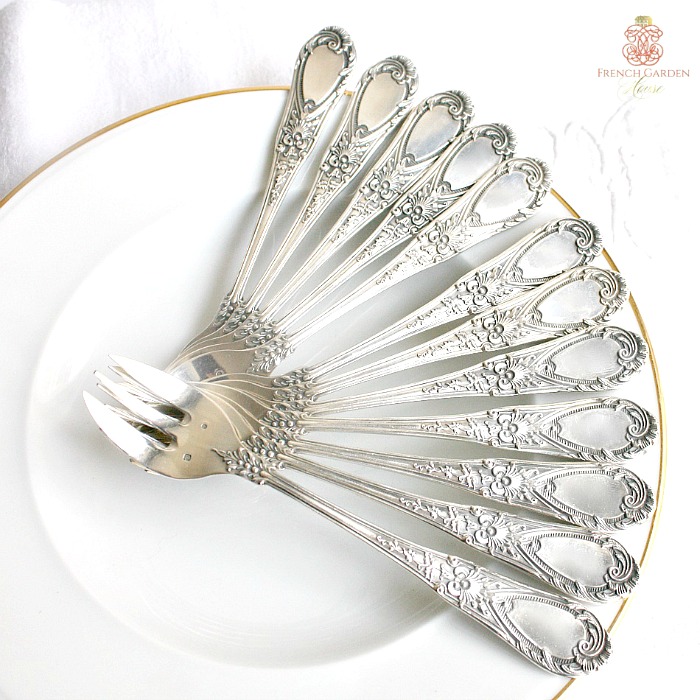
Originally only the aristocracy were able to afford such elegant extravagances, but eventually the middle classes caught the oyster fever for very, very special occasions and also desired to have the oyster plates and special flatware to eat them with.
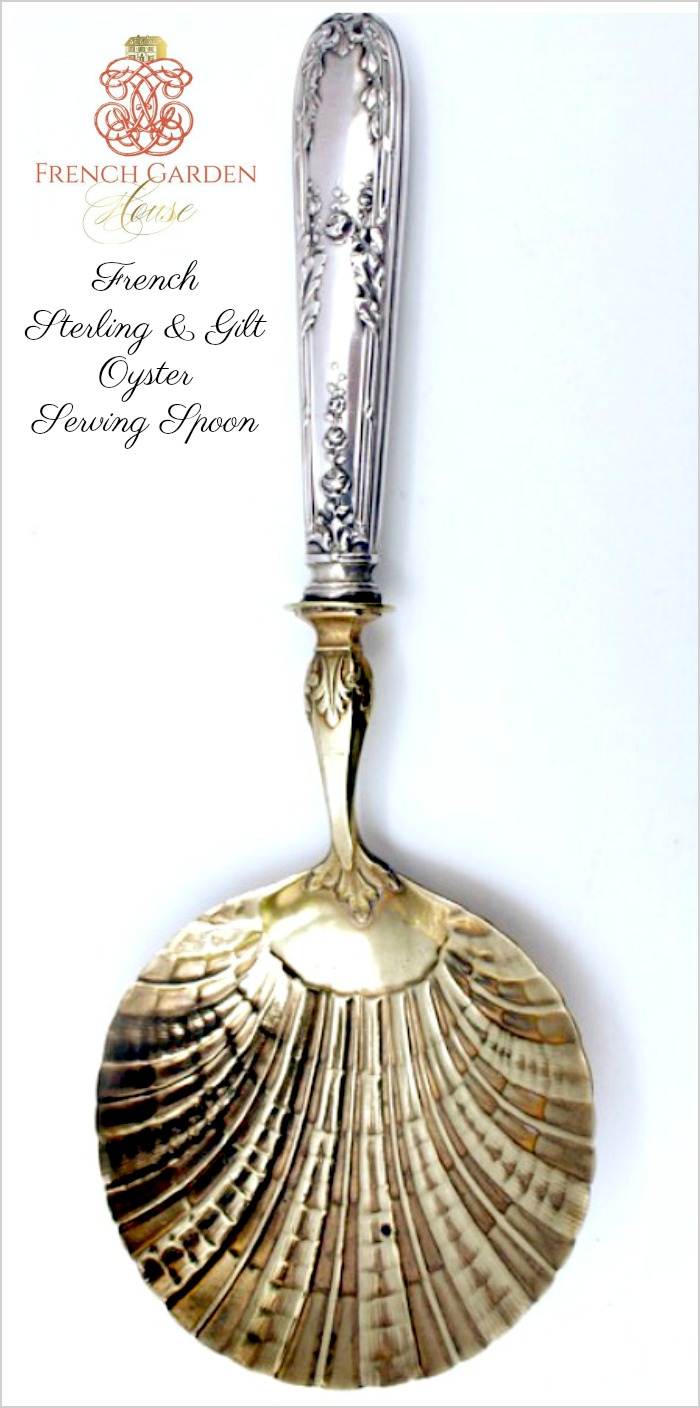
Here in the states the American passion for oysters grew, and the wealthy on the East Coast entertained with lavish dinners where guests were served their first course on beautifully gilded oyster servers and plates. The American and European porcelain manufacturers produced extensive ranges of refined oyster servers and plates.
Even though the oyster population declined due to over harvesting right after WWI, and the next “trend” in entertaining took the oyster’s place, oyster plates and silverware for eating oysters remain a coveted heirloom antique.

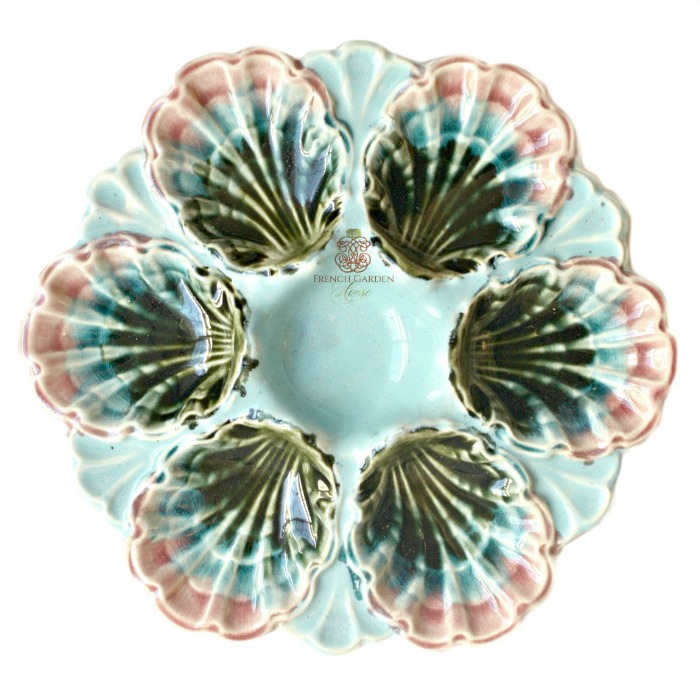
TYPES OF OYSTER PLATES:
Three types of oyster plates were designed in the 19th century for oysters.
1. Plates for serving oysters on the half shell with ice.
2. Plates for serving oysters on the half shell without ice.
3. Plates for serving shucked oysters, directly on the plate. {these are the most widely coveted.}
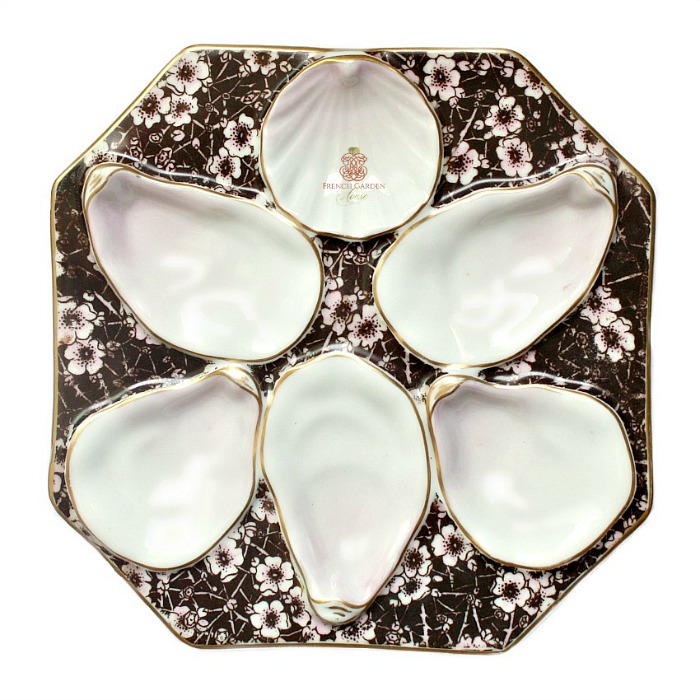
The first two variations are not often found in good condition, as the shells scratched the plates. The third plate, designed to hold shucked oysters in their liquor, are the ones that have remained in good condition and intrigue collectors again and again.

WHAT TO LOOK FOR:
1. Quality. These plates were made by the finest producers in the 19th century, and it shows. Hand painted plates are always going to be more collectable than transfer printed.
2. Condition. While the painted or glazed top part of the plate should be as pristine as possible {no chips, cracks, or worn off paint}, the bottom of the plate usually should have some wear. These plates were used at the table, so the part that rests on the table should have signs of wear, as no wear at all could indicate it’s a new plate.
3. Marks. Some, but not all plates will have at least one mark, the manufacturer’s mark, some have the decorator’s mark also. Plates can also have impressed mold numbers, and a handprinted signature of the artist. There are plenty of high quality antique oyster plates that were not marked in any way. Many of the majolica plates, for instance, have no marks but are known patterns and or molds to dealers and collectors.
4. Beauty. Buy what you love! There are so many gorgeous types of decorated oyster serving plates. Add plates to your collection for their color, their design, or simply because it sparks your imagination or it’s an intriguing piece!
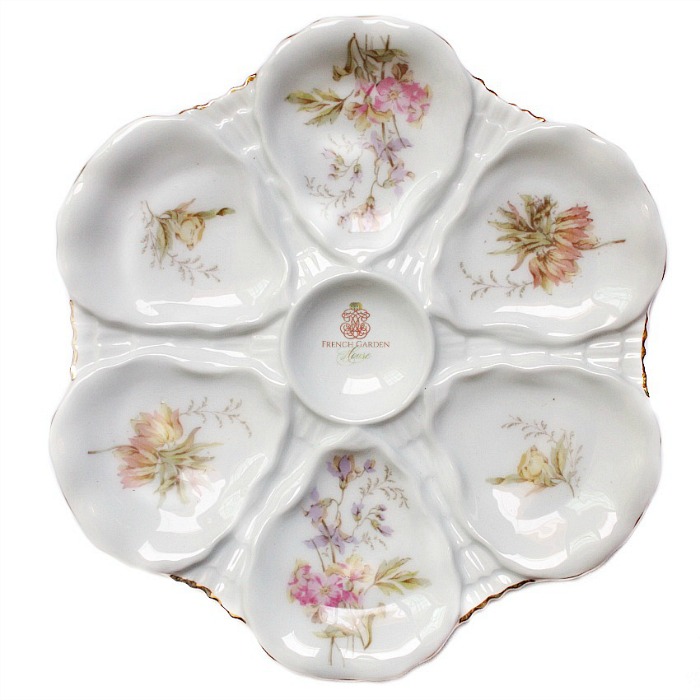
Prices for antique plates can range from just over $100 to over $3,000. Some collector’s focus on one color, pink, for example, or aqua blue. Some collector’s only collect oyster plates with floral designs, some only want to have French antique plates in their collection. Others only adore majolica plates {these are more often than not the most expensive plates} in bright, bold colors.
You can showcase your oyster plates collection on plate stands on shelves, or hang a few around your antique French mirror in the dining room. A few look marvelous, many make a grand gracious statement!
Each oyster plate is a rare treasure, with a story of its own. An heirloom collection of oyster plates is so alluring when displayed on the walls or shelves in a gracious home, that the temptation to begin your own collection might overwhelm!
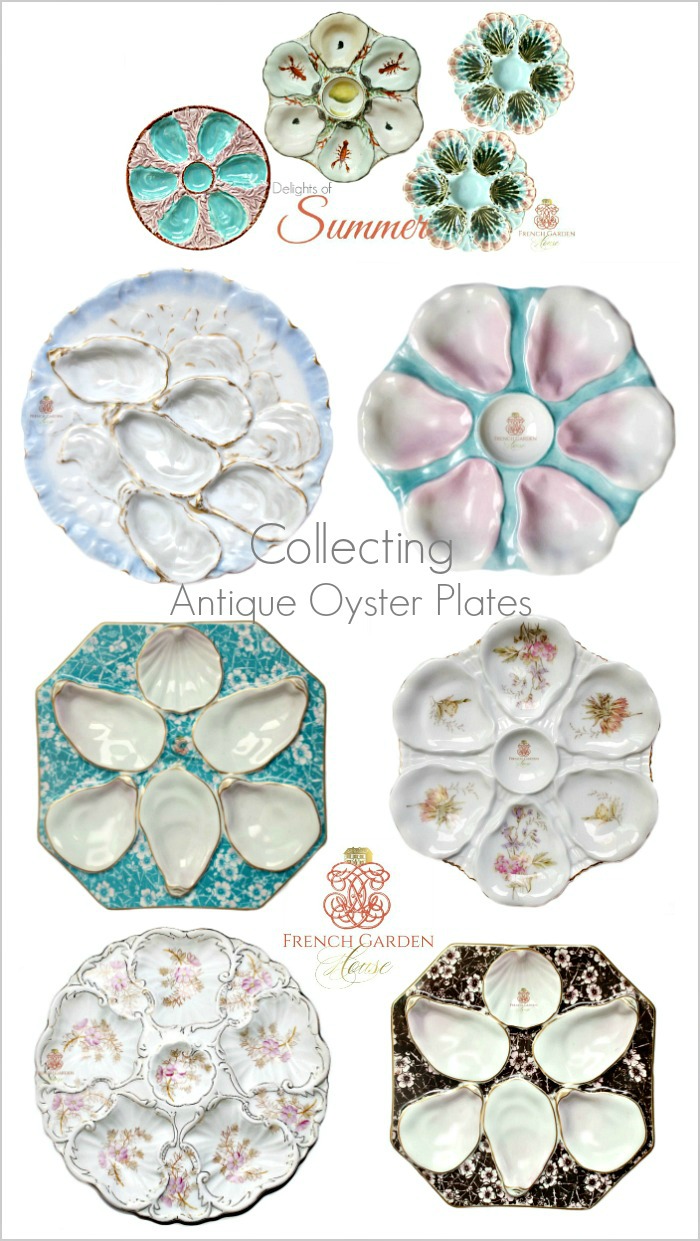
Next time, I’m reviewing my friend Jamie’s new book, filled with sweet projects you can do for your French Country style home!
à bientôt

Shop for the best in French Antiques, furniture with the patina of age, vintage accessories to delight you and your family & friends, and French Country utilitarian pieces. Treasures that make your home fresh, beautiful, inspirational and uniquely yours. Visit our shop FrenchGardenHouse.com

 Your Cart
Your Cart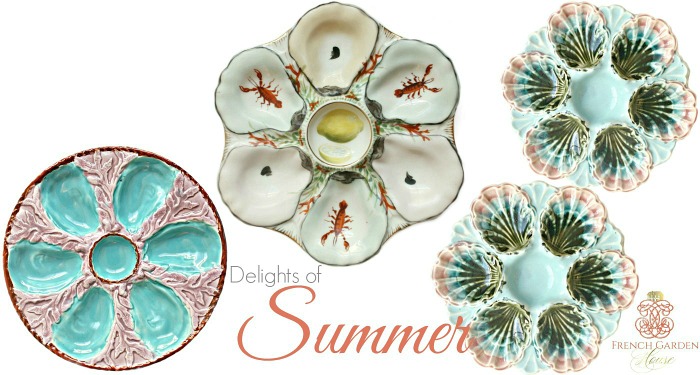
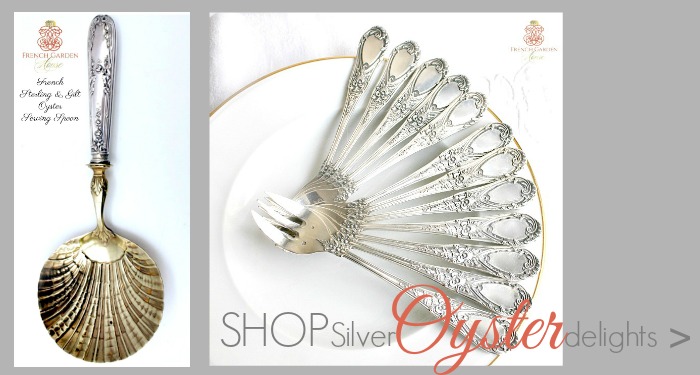
Great blog post. You are speaking my language on this one… As a woman with her kitchen and pantry walls covered in Oyster plates 🙂 Thanks for the information and the beautiful photos
Thank you Pam, you are a woman after my own heart! It would figure that you, fabulous designer that you are, would have a stunning collection of oyster plates. I hope your summer is off to a beautiful beginning.
Lidy, what a beautiful and informative post. I have always loved Oyster plates and have a few that I love.
Hope this finds you enjoying a lovely summer!
Sandra, thank you, it’s the best part of writing the back-room blog, sharing what I love about antiques with all of you, fellow lovers of beautiful things!
My heart flutters at seeing your oyster plates. I have been collecting the more colorful of them for a while. When last in New Orleans I went looking for them to surround an oil painting . I wanted them to coordinate with the color of the apron the woman in the painting had on. I found them! Thought my honey would faint at the cost but when I showed him the arrangement surrounding the painting he was pleased. His daughter will inherit them so I think that soothed his ruffled feathers. I see them every day as I come and up and down the stairs and smile.
Oh Alice! How exciting to find just the perfect ones! There is such a huge variety of them, isn’t there? And they range from the 100 dollars to the “over the moon” price points.
I laughed at the “I thought my honey would faint at the cost” because my own Mr. FGH would most likely faint if he knew how much I have to spend to buy them for the shop. {that will remain
our little secret!]
I’m not an oyster fan but LOVE these plates
Me too, Tammy!! Isn’t it wonderful that we can still enjoy oysters, but just the antiques made for them!
I love the look of oyster plates… I think its the little ruffled edges for each oyster that I like. As for the oysters themselves… I’ll pass.
Love oysters and really love the plates! I saw a collection many years ago, hanging on a wall, all the same. It was beautiful. Buy each of yours are divine, Lidy!
Absolutely fascinating. Thank you for sharing your knowledge and your beautiful plates. I’ve never been an oyster eater, but this post has me eyeing a spot in my dining room for an oyster plate or two!
Oh, Lidy, I am also not a lover of oysters, but I do love my lobster. 😉 I can see why you love these oyster plates. They are stunning!
Sharon, me too! There is nothing wrong with eating lobster while gazing fondly at your collection of oyster plates, is there?
Dear Lidy, I have never seen an oyster plate in my life before! I didn’t know they existed and I wonder whether fine society in my country has a history of using them. The plates you have shown are incredibly beautiful and I would be proud to have a few, they look like pieces of fine art. I certainly would put very good use to those forks, since I am a complete and utter ostreaphile, but would not be able to bare eating oysters from anything other than their own shell, with nothing other than the seawater in which they lived 🙂 I have been spoiled as my husband dives them out of the sea for me whenever we are on holiday at the coast, and they have no chance of reaching a plate! <3 Jeanne
Jeanne, how lucky your are! Oysters freshly caught and just for YOU! I am sure that those are the very best kind.
Beautiful plates Lidy. I am a new subscriber so I am excited about all the things you have to share. Floral Friday’s have been amazing.
Good morning Dianne!
Thank you so much, for subscribing, and for your sweet comment! It’s so nice to have you join me here, and
I’m so happy you are enjoying our Floral Fridays!
Wishing you a beautiful summery day,
xo
What magnificent pieces Lidy!…I have always admired them when seeing such beauties in exquisite antique shops…and that Oyster Flatware and Serving spoon are so beautiful!! Forwarding this to a friend who loves to collect Oyster plates! And thanks again for the history of the plates…many times when reading your posts, I feel as if I am at a lecture at a fine Art school learning about the wonderful things you present to us.
I don’t collect them but these are over the moon beautiful. I appreciate their beauty and history and loved your article.
Hi, my name is Jackie Sandro-Greenwell and I am the director of the Fine Art department at Rowan College South Jersey in Cumberland County NJ. Every few years I have an exhibit in our gallery of oyster plates past and present. I am always looking for antique oyster plates to display in the gallery. I am looking for people who could loan and or sell their antique oyster plates during the exhibit usually in November (2023)Thank you!
I was left a 50 or so plate collection of antique oyster plates unfortunately we are planning to be rather nomadic in our retirement and will need to sell these, individually or collectively. Do you purchase oyster plates or could you point me towards someone who does ?
Lisa, I suggest you ask a local antique shop if they know of a dealer who might be interested.